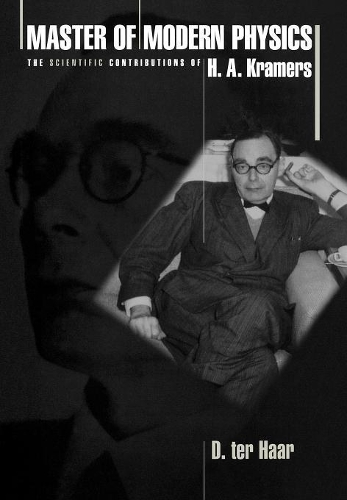
Master of Modern Physics: The Scientific Contributions of H. A. Kramers
(Hardback)
Publishing Details
Master of Modern Physics: The Scientific Contributions of H. A. Kramers
By (Author) Dirk ter Haar
Princeton University Press
Princeton University Press
10th March 1998
United States
Classifications
Professional and Scholarly
Non Fiction
Physics
Biography: general
History of science
530.92
Physical Properties
Hardback
296
Width 152mm, Height 235mm
595g
Description
The Dutch scientist Hendrik Kramers (1894-1952) was one of the greatest theoretical physicists of the 20th century - and one of a mere handful who have made major contributions across the whole field. Physicists know his name from, among other things, the Kramers dispersion theory, the Kramers-Heisenberg dispersion theory, the Kramers opacity formula, the Kramers degeneracy, and the Kramers-Kronig relations. In this book, D. ter Haar presents a comprehensive discussion of Kramers's scientific work, and reprints 12 of his most important papers. The author seeks to show us that Kramers's diverse work makes him at least the equal of such celebrated physicists as Fermi and Landau. He takes us through Kramers's research in such subjects as quantum theory, quantum electrodynamics, statistical mechanics, and solid-state physics. The papers he reprints include Kramers's derivation of the dispersion formulae that led to Heisenberg's matrix mechanics; his paper on the Brownian-motion approach to chemical reactions; a paper on polymers; and a paper on renormalization, a concept first intorduced by Kramers and now one of the basic ideas of modern field theory.
Reviews
"Ter Haar, who studied with Kramers, has a unique approach to scientific biography: He makes us read the original papers [along with] discussion of the published work and an eludication of these papers... On quantum electrodynamics] and the other subjects on which he touches, [ter Haar] has written a stimulating book that brings Kramers's history-making work even more into focus..."--Physics Today
Author Bio
D. ter Haar is Emeritus Fellow of Magdalen College, Oxford and the author of numerous books about physics, including Elements of Statistical Mechanics.
